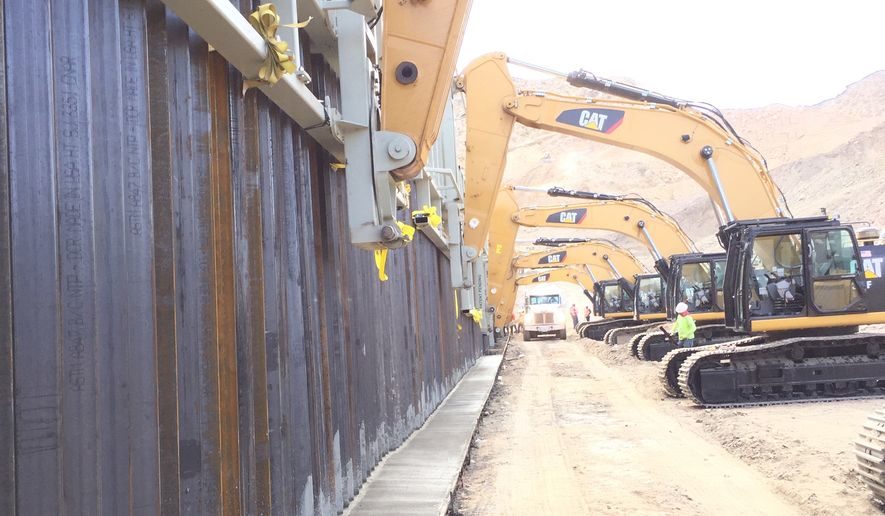The 18-foot steel bollard wall is similar to the designs used by the Border Patrol, sealing off a part of the border that had been a striking gap in existing fencing, according to We Build the Wall, the group behind the new section.
The section was also built faster and, organizers say, likely more cheaply than the government has been able to manage in recent years.
Kris Kobach, a former secretary of state in Kansas and an informal immigration adviser to President Trump, says the New Mexico project has the president's blessing and says local Border Patrol agents are eager to have the assistance.
"We're closing a gap that's been a big headache for them," said Mr. Kobach, who is general counsel for We Build the Wall.
The announcement comes at a critical time for the border.
Mr. Trump's plans to build hundreds of miles of new and replacement wall took a hit late last week when a federal judge ordered a halt to part of his emergency declaration and shifting of money within the Pentagon to make up for Congress's refusal to grant him the money he wanted.
Judge Haywood Gilliam says the president can't spend money when Congress has debated it and refused to approve it.
Enter We Build the Wall, which says now that it's proved it can build border wall. The group has eyes on other areas where private landowners hold border lands and want a barrier to cut down on the illegal traffic across their property.
The new wall begins at the Rio Grande and runs up to the lower elevations of Mount Cristo Rey. The wall on the Texas side ends at the river, and there used to be a gap on the New Mexico side running from the river over to Mount Cristo Rey.

Mr. Kobach says agents have told him perhaps 100 migrants a night cross - but the bigger problem is that they would cross, gaining agents' attention, then drug smugglers would use the distraction to run drugs through elsewhere in the gap.
A typical night could exceed $100,000 worth of drugs through the gap, Mr. Kobach said.
Construction began Friday and will be completed Tuesday. Tommy Fisher's Fisher Sand & Gravel did the construction.
Mr. Fisher has been in the news recently with Mr. Trump suggesting repeatedly and publicly that the government should consider his outfit for future border wall construction.
He was one of the contractors selected in 2017 to build wall prototypes in San Diego. None of those prototypes was deemed contract-worthy, and Congress has forbidden the Border Patrol from using any of those designs anyway.
More recently, Mr. Fisher announced he could build 234 miles of fencing at $1.4 billion - or about $6 million per mile. That's about a quarter of the cost of Mr. Trump's current fencing, which goes off at about $25 million per mile.
The half-mile in New Mexico cost $8 million, but Mr. Kobach said because part of it involved building on Mount Cristo Rey and involved moving a lot of dirt, that's more expensive than most mileage would be.
A private wall has been a dream of border security enthusiasts for years.
More than a decade ago, adherents of the Minuteman movement, which sought to draw attention to the lack of border barriers in Arizona, constructed some fencing on a ranch in southeastern Arizona. The fencing was approved by local authorities as a way to corral cattle but was also seen as a way of blocking illegal migration, The Arizona Daily Star reported in 2006.
Organizers said funding didn't materialize to finish that project.
The new wall in New Mexico is up along the border and designed just like the Border Patrol's structures, intended to be a deterrent to illegal crossing.
Stephen Dinan can be reached at sdinan@washingtontimes.com.




Comment:
UPDATE 31/05/2019: Sunland mayor's cease-and-desist order on construction rescinded and the project is nearly complete: UPDATE 02/06/2019: Construction nearly complete, with zero illegal border crossings in the last week. The barrier is already being probed for weaknesses by drug cartel military: